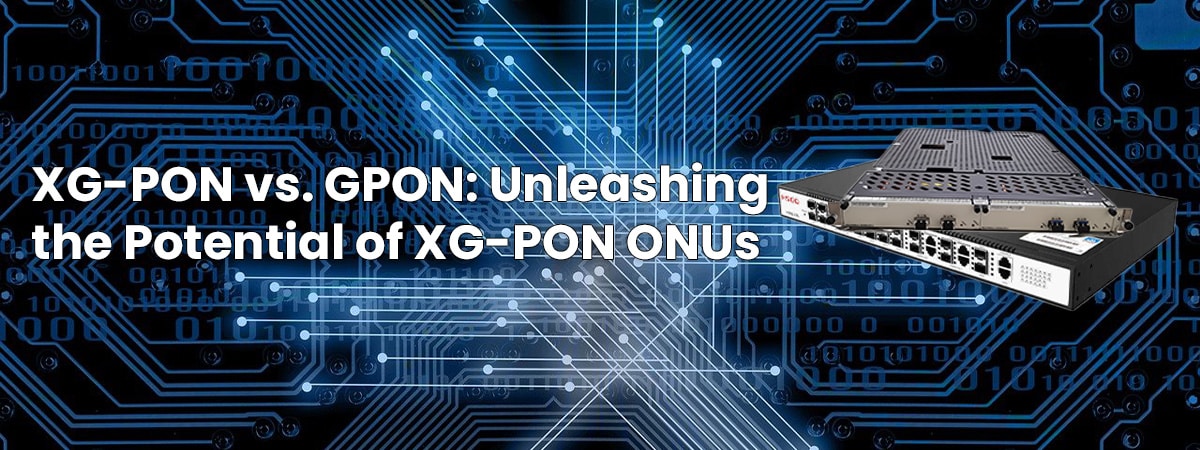Introduction:
In the realm of fiber-optic networks, the demand for higher bandwidth and faster speeds continues to grow exponentially. To meet these demands, telecommunication companies are turning to advanced technologies like XG-PON (10G PON) and GPON (Gigabit Passive Optical Network) to deliver blazing-fast internet connectivity. In this article, we will delve into the key differences between XG-PON and GPON technologies, with a particular focus on the potential unleashed by XG-PON ONUs (Optical Network Units).
- Understanding GPON:
GPON, or Gigabit Passive Optical Network, has been widely adopted as the standard for fiber-optic networks. It offers downstream speeds of up to 2.5 Gbps and upstream speeds of 1.25 Gbps, making it suitable for various applications, including residential and small-to-medium-sized business environments. GPON ONUs enable reliable and cost-effective connectivity, but as data demands continue to rise, it becomes necessary to explore more advanced technologies. - Introducing XG-PON:
XG-PON, or 10G PON, represents the next evolutionary step in fiber-optic network technology. It delivers significantly higher speeds, offering both downstream and upstream rates of up to 10 Gbps. With ten times the capacity of GPON, XG-PON has the potential to revolutionize the way we experience the internet. XG-PON ONUs are designed to tap into this potential, providing users with unparalleled speeds and performance. - Unleashing the Potential:
a. Ultra-Fast Internet: XG-PON ONUs open the doors to ultra-fast internet connectivity. Whether it’s streaming high-definition content, engaging in real-time gaming, or handling large file transfers, XG-PON can handle the bandwidth-intensive demands of modern applications, ensuring a seamless online experience. - b. Future-Proofing: With the ever-increasing demand for data, future-proofing becomes a critical consideration. XG-PON ONUs are designed to accommodate future technological advancements and increased bandwidth requirements, allowing network operators and users to stay ahead of the curve and avoid costly infrastructure upgrades.
- c. Scalability: XG-PON ONUs provide scalability for network operators. As the number of subscribers and bandwidth demands grow, XG-PON’s high capacity ensures that the network can handle increased traffic without compromising performance or quality of service.
- d. Business Applications: XG-PON ONUs empower businesses with the ability to leverage bandwidth-intensive applications, such as video conferencing, cloud services, and data backups. These high-speed connections enable faster and more efficient workflows, enhancing productivity and competitiveness.
Deployment Considerations:
While XG-PON offers significant advantages, it’s important to consider factors such as cost, infrastructure requirements, and compatibility. Upgrading from GPON to XG-PON may require investment in new equipment, including XG-PON ONUs and Optical Line Terminal (OLT) systems. However, the long-term benefits and potential for future growth often outweigh the initial investment.
Conclusion:
XG-PON ONUs represent a game-changing advancement in fiber-optic network technology. With their ability to unleash ultra-fast internet speeds, future-proofing capabilities, scalability, and business applications, XG-PON ONUs are paving the way for a new era of connectivity. While GPON continues to be a reliable and widely used technology, the potential of XG-PON ONUs cannot be ignored. As the demand for bandwidth continues to surge, XG-PON ONUs will play a crucial role in meeting the needs of modern applications and providing an exceptional internet experience for users around the world.
